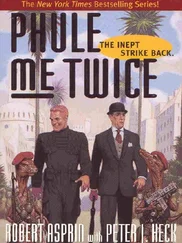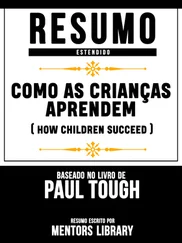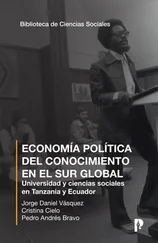Duckworth was intrigued by Mischel’s results, which her Philadelphia self-control study seemed to corroborate. But she was actually more interested in Mischel’s original premise: If you want to maximize your self-control, which tricks and strategies are most effective? And can those techniques be taught? Mischel’s experiment had suggested some interesting answers. For instance, both psychoanalytic theory and behavioral theory had held that the best way for a child to motivate himself to wait and get two marshmallows was for him to keep the reward at the center of his attention, to reinforce how delicious those two marshmallows would be when he finally got to eat them. But in fact, the opposite turned out to be true: when the marshmallows were hidden from view, children were able to delay much longer than when the marshmallows were right in front of them. The children who did best at the delay test created their own distractions. Some talked or sang to themselves while they waited for the experimenter to return; some looked away from the treat or put their hands over their eyes. One young master of self-control actually managed to take a nap.
Mischel found that children were able to delay more effectively if they were given simple prompts to encourage them to think differently about the marshmallow. The more abstractly they thought about the treat, the longer they were able to delay. When children were invited to think of the marshmallow as a puffy round cloud instead of a marshmallow, they were able to delay about seven minutes longer. Some children were encouraged to look at a picture of a marshmallow instead of the real marshmallow. They were able to wait longer too. Others looked at the real marshmallows but were told to “put a frame around them in your head, just like a real picture.” Those children were able to wait almost eighteen minutes.
But when Duckworth tried to adapt Mischel’s findings to a school context, she found it more difficult than she had expected. In 2003, she and some colleagues conducted a six-week-long experiment with forty fifth-grade students at a school in Philadelphia. They led the kids through self-control exercises and gave them rewards for completing their homework. And at the end of the experiment, the students dutifully reported that they now had more self-control than when they started the program. But in fact, they did not: the children who had been through the intervention did no better on a variety of measures than a control group at the same school. “We looked at teacher ratings of self-control, we looked at homework completion, we looked at standardized achievement tests, we looked at GPA, we looked at whether they were late to class more,” Duckworth told me. “We got zero effect on everything.”
The problem with self-control techniques like the ones that the most disciplined marshmallow resisters employed is that they work only when a child knows what he or she wants. The long-term goals Duckworth hoped kids would aspire to were less tangible and immediate and attractive than two marshmallows after twenty minutes. So how do you help children acquire the focus and persistence they will need for longer-term, more abstract goals: passing a test or graduating from high school or succeeding in college?
Duckworth finds it useful to divide the mechanics of achievement into two separate dimensions: motivation and volition. Each one, she says, is necessary to achieve long-term goals, but neither is sufficient alone. Most of us are familiar with the experience of possessing motivation but lacking volition: You can be extremely motivated to lose weight, for example, but unless you have the volition—the willpower, the self-control—to put down the cherry Danish and pick up the free weights, you’re not going to succeed. If a child is highly motivated, the self-control techniques and exercises Duckworth tried to teach those fifth-grade students might be very helpful. But what if students just aren’t motivated to achieve the goals their teachers or parents want them to achieve? Then, Duckworth acknowledges, all the self-control tricks in the world aren’t going to help.
But that doesn’t mean it’s impossible to shift a person’s motivation. In the short term, in fact, it can be surprisingly easy. Let’s stay in the candy aisle for a bit longer and consider a couple of experiments done decades ago involving IQ and M&M’s. In the first test, conducted in northern California in the late 1960s, a researcher named Calvin Edlund selected seventy-nine children between the ages of five and seven, all from “low-middle class and lower-class homes.” The children were randomly divided into an experimental group and a control group. First, they all took a standard version of the Stanford-Binet IQ test. Seven weeks later, they took a similar test, but this time the kids in the experimental group were given one M&M for each correct answer. On the first test, the two groups were evenly matched on IQ. On the second test, the IQ of the M&M group went up an average of twelve points—a huge leap.
A few years later, two researchers from the University of South Florida elaborated on Edlund’s experiment. This time, after the first, candy-less IQ test, they divided the children into three groups according to their scores on the first test. The high-IQ group had an average IQ score on the first test of about 119. The medium-IQ group averaged about 101, and the low-IQ group averaged about 79. On the second test, the researchers offered half the children in each IQ category an M&M for each right answer, just as Edlund had; the others in each group received no reward. The medium-IQ and high-IQ kids who got candy didn’t improve their scores at all on the second test. But the low-IQ children who were given M&M’s for each correct answer raised their IQ scores to about 97, almost erasing the gap with the medium-IQ group.
The M&M studies were a major blow to the conventional wisdom about intelligence, which held that IQ tests measured something real and permanent—something that couldn’t be changed drastically with a few candy-covered chocolates. They also raised an important and puzzling question about the supposedly low-IQ children: Did they actually have low IQs or not? Which number was the true measure of their intelligence: 79 or 97?
This is the kind of frustrating but tantalizing puzzle that teachers face on a regular basis, especially teachers in high-poverty schools. You’re convinced that your students are smarter than they appear, and you know that if they would only apply themselves, they would do much better. But how do you get them to apply themselves? Should you just give them M&M’s for every correct answer for the rest of their lives? That doesn’t seem like a very practical solution. And the reality is that for low-income middle-school students, there are already tremendous rewards for doing well on tests—not immediately and for each individual correct answer, but in the long term. If a student’s test scores and GPA through middle and high school reflect an applied IQ of 97 instead of 79, he is much more likely to graduate from high school and then college and then to get a good job—at which point he can buy as many bags of M&M’s as he wants.
But as every middle-school teacher knows, convincing students of that logic is a lot harder than it seems. Motivation, it turns out, is quite complex, and rewards sometimes backfire. In their book Freakonomics, Steven Levitt and Stephen Dubner recount the story of a study researchers undertook in the 1970s to see if giving blood donors a small financial stipend might increase blood donations. The result was actually that fewer people gave blood, not more.
And while the M&M test suggests that giving kids material incentives to succeed should make a big difference, in practice, it often doesn’t work that way. In recent years, the Harvard economist Roland Fryer has essentially tried to extend the M&M experiment to the scale of a metropolitan school system. He tested several different incentive programs in public schools—offering bonuses to teachers if they improved their classes’ test results; offering incentives like cell-phone minutes to students if they improved their own test results; offering families financial incentives if their children did better. The experiments were painstaking and carefully run—and the results have been almost uniformly disappointing. There are a couple of bright spots in the data—in Dallas, a program that paid young kids for each book they read seems to have contributed to better reading scores for English-speaking students. But for the most part, the programs were a bust. The biggest experiment, which offered incentives to teachers in New York City, cost seventy-five million dollars and took three years to conduct. And in the spring of 2011, Fryer reported that it had produced no positive results at all.
Читать дальше



![Коринн МакКей - How to Succeed as a Freelance Translator [calibre 3.46.0]](/books/402693/korinn-makkej-how-to-succeed-as-a-freelance-transl-thumb.webp)








